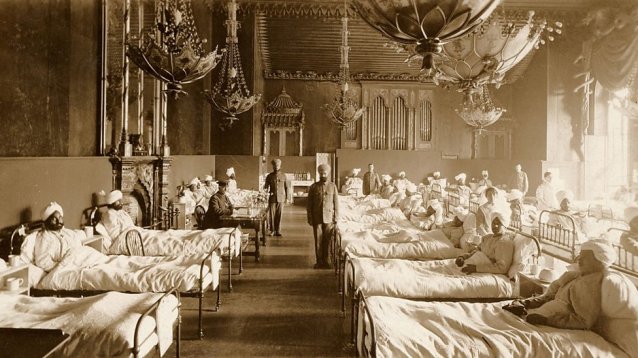In the earliest stages of the Great War, before British casualties began to assume their calamitous scale, measures were taken to meet the needs of imperial troops, above all ordinary soldiers of the Indian army who were wounded in France. For this purpose the Royal Pavilion in Brighton was turned into a military hospital, and arrangements made there to accommodate the different dietary and other requirements of Hindu, Sikh and Muslim patients. There seems to have been some notion that the architecture of the Prince Regent’s Brighton Pavilion would provide more sympathetic surroundings for these Indian troops, in other words make them feel more at home than the more humdrum surroundings of Rickmansworth or, indeed, the splendours of Cliveden and other ad hoc military hospitals set up in great country houses. One must presume that a more sinister reason was to sequester these men along the colour line.
Thus in December 1914, 345 Indian soldiers took up residence at the Brighton Pavilion. Most of them recovered from their injuries, but several dozen soon died. The bodies of twenty-one Muslim men were buried in accordance with Islamic rites at the Shah Jahan Mosque in Woking, Surrey, but those of ten Hindus and Sikhs were taken from the Royal Pavilion to a spot on the South Downs above Brighton, overlooking the English Channel—in the middle of an exposed field belonging to the fourth Marquess of Abergavenny. A local undertaker, presumably in close consultation with old hands at the India Office was prevailed upon to build a ghat or funeral pyre on which the remains were cremated, together with those of forty-three other non-Muslim Indian casualties from other military hospitals in the district. Their ashes were afterwards scattered in the English Channel; by ancient convention these must be returned to the life-giving element of water.















